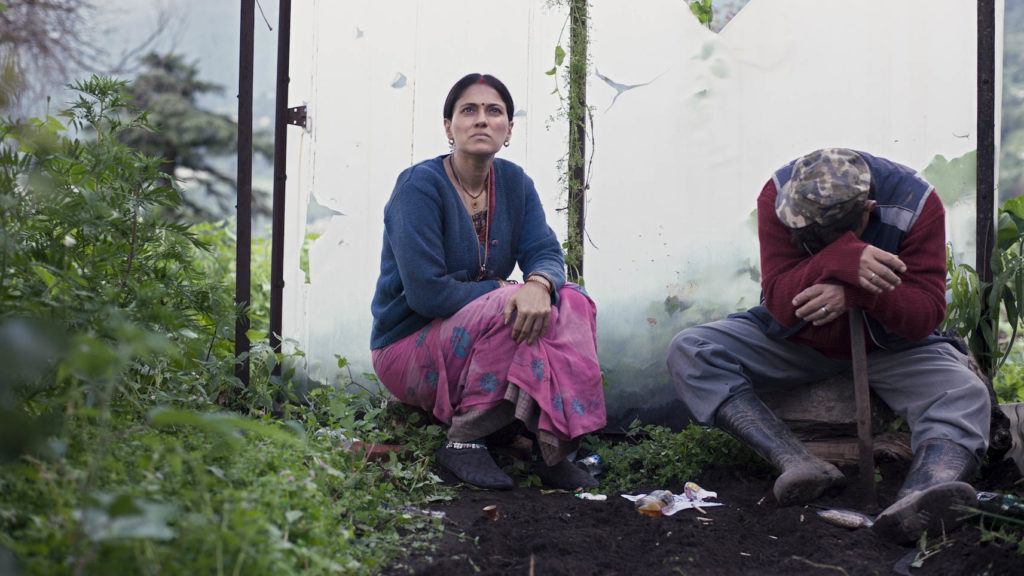Fire In The Mountains

Vinamrata Rai and Chandan Bisht appear in Ajitpal Singh's FIRE IN THE MOUNTAINS. Image courtesy Sundance Institute.
Dharam (Chandaan Bisht) and Chandra’s (Vinamrata Rai) son, Prakash (Mayank Singh Jaira), sees a backward doctor in the Himalayan village who threatens him with a bone saw to try to get him to stand and walk. Chandra keeps shelling out rupees to pay the doctor, while Dharam drinks excessively and, with the family priest, prays to the family deity—on whose satisfaction Dharam believes Prakash’s hopeful (read: wishful) recovery depends.
Chandra presses her daughter (Harshita Tiwari), an excellent student (and TikTok aficionado) who tutors others at the local school, to help Prakash with his studies. She refuses with a joke I, as a spastic diplegic, found funny but I won’t repeat it here.
Dependent on tourist traffic for their livelihoods, the family lives somewhere in the northeastern Indian state of Uttarakhand. The locals call it the “Switzerland of India” which, if you look on Google, narrows it down to about twenty towns and villages that each claim the title—the most Indian thing I’ve ever seen in a movie.
Ajitpal Singh’s drama, originally titled SWIZERLAND, falls into that complicated category of poverty porn that gets shopped heavily to U.S. distributors at festivals such as Sundance. All the usual adjectives apply, and it’s a good if somewhat unfocused story. We laugh and cry with the family, except when Dharam becomes extremely abusive. However, the film feels like a series of events happening around Prakash, about which he hasn’t any thoughts. In my years of physical therapy and multiple surgeries, I had never, not once, met so quiet a paraplegic—regardless of their family circumstances. Their minds fly where their legs won’t take them.
Singh has great reverence for the idiosyncrasies of village life, including religious ecstacy and superstition. What we don’t see is the impact of Western and affluent Indian tourism juxtaposed against the impoverished villagers who serve them. Released just before Sundance, Ramin Bahrani’s THE WHITE TIGER is a much more coherent affair that neither avoids nor condescends about India’s enormous income gap or the tenacity of the underprivileged. FIRE’s lesson, if it can be called that, should infuriate any low-income family who has ever poured their blood, sweat and tears into raising a disabled child. It is precisely because these parents do not leave their child’s future up to god that they overcome such adversity.